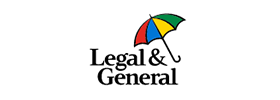When you lease a car or receive a car loan, you want to make sure you are fully covered in case you are in an accident during the early stages of the lease or loan. That is where gap insurance comes in handy. Gap, known as Guaranteed Auto Protection, offers additional insurance protection when you owe more on the car in regards to the lease than what the car is actually worth.
How Gap Insurance Works
If your car is completely totaled when involved in an accident, theft, or a natural disaster such as a fire or flood, your insurance company may pay only what they determine to be the actual cash value of the car. Yet your loan or lease payment may be more than the actual cash value that the insurance company gives you.
In this case, gap insurance will cover the difference amount that is left on the loan or lease that wasn’t covered by the insurance company. This type of insurance prevents you from owing money to the lender.
For example, you purchase a vehicle for $25,000 with a $1,000 down payment and monthly payments of $325. However, you get into an accident five months later.
You already paid $1,625 plus your down payment of $1,000 for a total of $2,625 on the loan. This means you still owe $22,375. The insurance company determines that the actual cash value of the car is $21,000. This means you still owe $1,375 on the loan. Luckily, you have gap insurance that will pay the $1,375 so that you won’t have to take the money out of your bank account.
Gap insurance is ideal for people who lease vehicles or get an auto loan when they will owe more on the lease/loan than what the cash value is on the car. If you do not have gap insurance, you might pay a huge difference that can put a strain on your finances.






















